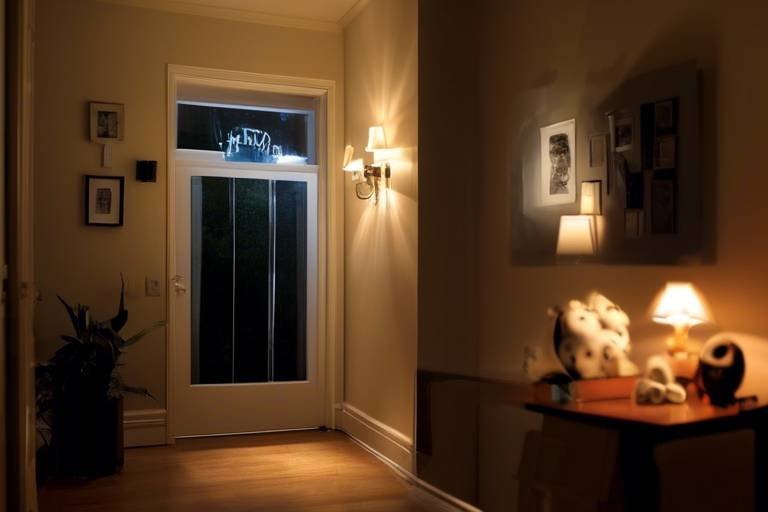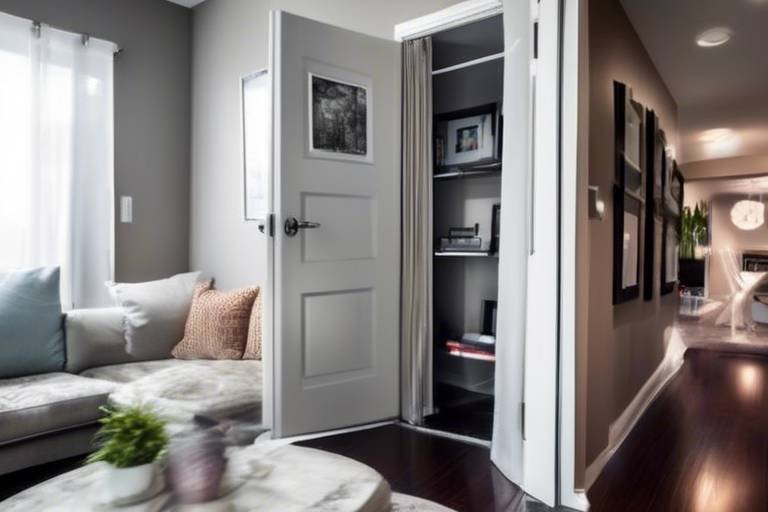The Importance of Proper Ventilation in Your Home
Have you ever walked into a room and felt the air was just... stale? Or maybe you've noticed that certain areas of your home feel damp and musty? These are clear signs that your home might be lacking proper ventilation. Proper ventilation is not just a luxury; it’s a necessity for maintaining a healthy living environment. It plays a critical role in ensuring that the air you breathe indoors is clean and fresh, while also preventing moisture buildup that can lead to serious issues like mold growth and structural damage.
Imagine your home as a living organism. Just like we need to breathe to stay alive, homes need to "breathe" too. Ventilation is the process that allows indoor air to exchange with outdoor air, effectively removing pollutants, excess humidity, and unpleasant odors. This exchange is essential for maintaining a comfortable atmosphere, especially in spaces where we spend a lot of time, such as living rooms, bedrooms, and kitchens.
Moreover, poor ventilation can lead to a buildup of indoor air pollutants, including volatile organic compounds (VOCs), carbon dioxide, and allergens. These pollutants can contribute to health problems, particularly for vulnerable individuals like children, the elderly, and those with pre-existing respiratory conditions. By ensuring that your home is well-ventilated, you are not only enhancing your comfort but also protecting the health of your loved ones.
In addition to health benefits, proper ventilation can also improve energy efficiency in your home. When air circulates adequately, it helps regulate indoor temperatures, making it easier to heat or cool your home. This means you could potentially save money on your energy bills while enjoying a more comfortable living environment. So, let’s dive deeper into the different types of ventilation systems available and how they can help you achieve a healthier home.
Ventilation is the process of exchanging indoor air with outdoor air, which is essential for removing pollutants and maintaining a comfortable atmosphere in your home. There are various types of ventilation systems, including natural, mechanical, and hybrid systems, each with unique benefits and applications tailored to different home environments. Understanding these systems can help you choose the best option for your needs.
When it comes to ventilation, there are several systems to consider:
- Natural Ventilation: This relies on wind and temperature differences to circulate air. It’s an energy-efficient option for homes in suitable climates.
- Mechanical Ventilation: This uses fans and ducts to control air movement, providing consistent airflow regardless of external weather conditions.
- Hybrid Systems: These combine both natural and mechanical ventilation methods to maximize efficiency and effectiveness.
Choosing the right ventilation system for your home can significantly impact your indoor air quality and overall comfort. Now, let’s explore the benefits and limitations of these systems in more detail.
Q: What are the signs that my home needs better ventilation?
A: Common signs include stale air, musty odors, condensation on windows, and visible mold growth. If you notice these issues, it might be time to assess your ventilation system.
Q: Can I improve ventilation without major renovations?
A: Yes! Simple actions like opening windows, using exhaust fans, and ensuring vents are unobstructed can significantly improve air circulation.Q: How often should I ventilate my home?
A: Ideally, you should ventilate your home daily, especially in areas prone to moisture, such as kitchens and bathrooms. Regular airflow can help maintain a healthy indoor environment.
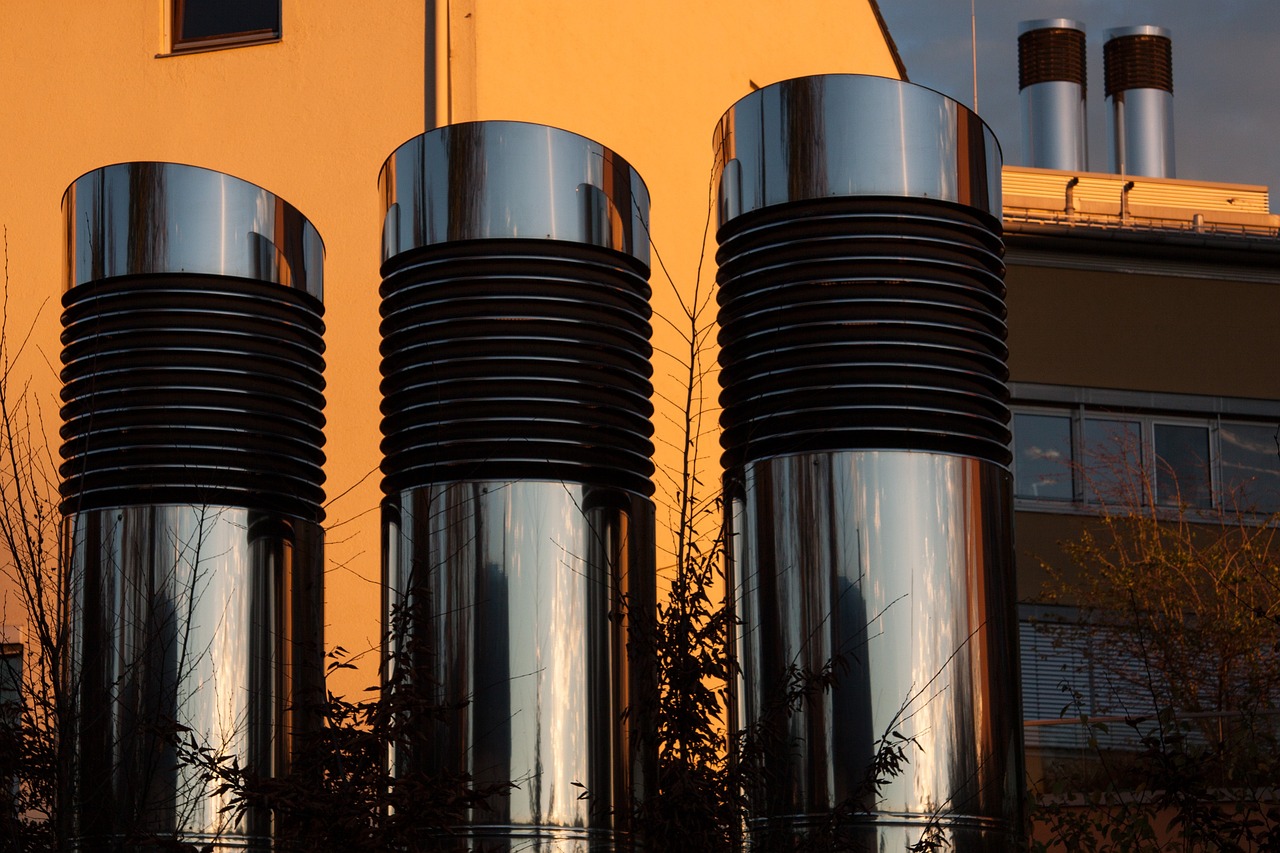
Understanding Ventilation
Ventilation is more than just a buzzword tossed around in home improvement discussions; it’s a critical process that ensures the air inside your home is fresh, clean, and safe to breathe. Imagine your home as a living organism; just like we need to breathe in fresh air to stay healthy, our living spaces require ventilation to maintain a balanced atmosphere. This process involves exchanging indoor air with outdoor air, effectively removing pollutants, odors, and excess moisture while allowing fresh air to circulate.
At its core, ventilation plays a pivotal role in maintaining a comfortable living environment. It helps regulate temperature, humidity, and air quality, which are essential for your family's health and well-being. Think of it as the lungs of your home, working tirelessly to ensure that stale air is expelled and replaced with invigorating fresh air. Without proper ventilation, the air inside can become stagnant, leading to a host of problems that can affect your health and comfort.
There are a few key aspects to consider when understanding ventilation:
- Air Quality: Poor ventilation can lead to the accumulation of indoor pollutants, including volatile organic compounds (VOCs), dust, and allergens, which can trigger respiratory issues.
- Humidity Control: Proper ventilation helps regulate humidity levels, preventing excess moisture that can lead to mold growth and structural damage.
- Energy Efficiency: A well-ventilated home can help reduce energy costs by optimizing the performance of heating and cooling systems.
In summary, understanding ventilation is crucial for creating a healthy and comfortable home environment. It's not just about opening a window; it's about implementing a system that effectively manages air quality, humidity, and energy efficiency. By prioritizing ventilation, you can ensure that your home remains a sanctuary for you and your loved ones.

Types of Ventilation Systems
When it comes to keeping the air in your home fresh and clean, understanding the different is crucial. Each system has unique characteristics, benefits, and applications tailored to various home environments. Let's dive into the three primary categories of ventilation: natural ventilation, mechanical ventilation, and hybrid ventilation. By grasping these concepts, you can make an informed decision about which system is best for your home.
Natural ventilation is the process of allowing outdoor air to flow into your home without the use of mechanical systems. This method relies on natural forces such as wind and temperature differences to facilitate air movement. Imagine opening your windows on a breezy day and letting the fresh air sweep through your living space—that's natural ventilation in action! It's an energy-efficient option, especially in climates where the weather is mild and conducive to open-air circulation.
One of the standout benefits of natural ventilation is its ability to reduce energy costs. Since it doesn't require electricity to operate, you can enjoy a cooler home in the summer without cranking up the air conditioning. Additionally, allowing fresh air to flow freely through your windows and vents can significantly improve indoor air quality by diluting indoor pollutants. It’s like giving your home a refreshing breath of fresh air!
However, natural ventilation isn't without its challenges. In extreme weather conditions, such as sweltering heat or freezing cold, relying solely on natural airflow may not be sufficient. Moreover, homes lacking adequate airflow pathways—like those with few windows or poor layout—might not benefit from this method. It's essential to evaluate your home's unique characteristics before committing to natural ventilation.
On the flip side, mechanical ventilation utilizes fans and ducts to control air movement within your home. This system provides consistent airflow regardless of external weather conditions, ensuring that your indoor environment remains comfortable year-round. Think of it as your home's personal air conditioning system, tirelessly working to keep the air fresh and clean.
Mechanical ventilation systems come in various forms, including exhaust fans, supply fans, and balanced systems that incorporate both. Each type serves a specific purpose, allowing you to tailor the system to your home's needs. For example, exhaust fans can effectively remove stale air from kitchens and bathrooms, while supply fans can introduce fresh air into living spaces. The flexibility of mechanical systems makes them an excellent choice for homes in climates where natural ventilation isn't feasible.
For those who want the best of both worlds, hybrid ventilation systems combine the benefits of natural and mechanical ventilation. These systems can automatically switch between natural and mechanical modes based on environmental conditions, optimizing energy use while ensuring adequate air exchange. Imagine having a smart system that knows when to open the windows for fresh air and when to kick on the fans to maintain comfort—sounds like a dream, right?
In summary, understanding the different types of ventilation systems can empower you to make informed decisions about your home's air quality. Whether you opt for natural, mechanical, or hybrid systems, each has its unique advantages and limitations. The key is to assess your specific needs and the characteristics of your home to choose the most suitable ventilation solution.
- What is the best type of ventilation system for my home?
The best type depends on your climate, home design, and personal preferences. Consider factors like energy efficiency, cost, and air quality needs. - How can I improve my home's ventilation?
You can improve ventilation by installing exhaust fans, opening windows regularly, or considering a mechanical ventilation system. - Is natural ventilation enough for my home?
It can be sufficient in mild climates, but in extreme weather or poorly designed homes, mechanical systems may be necessary.
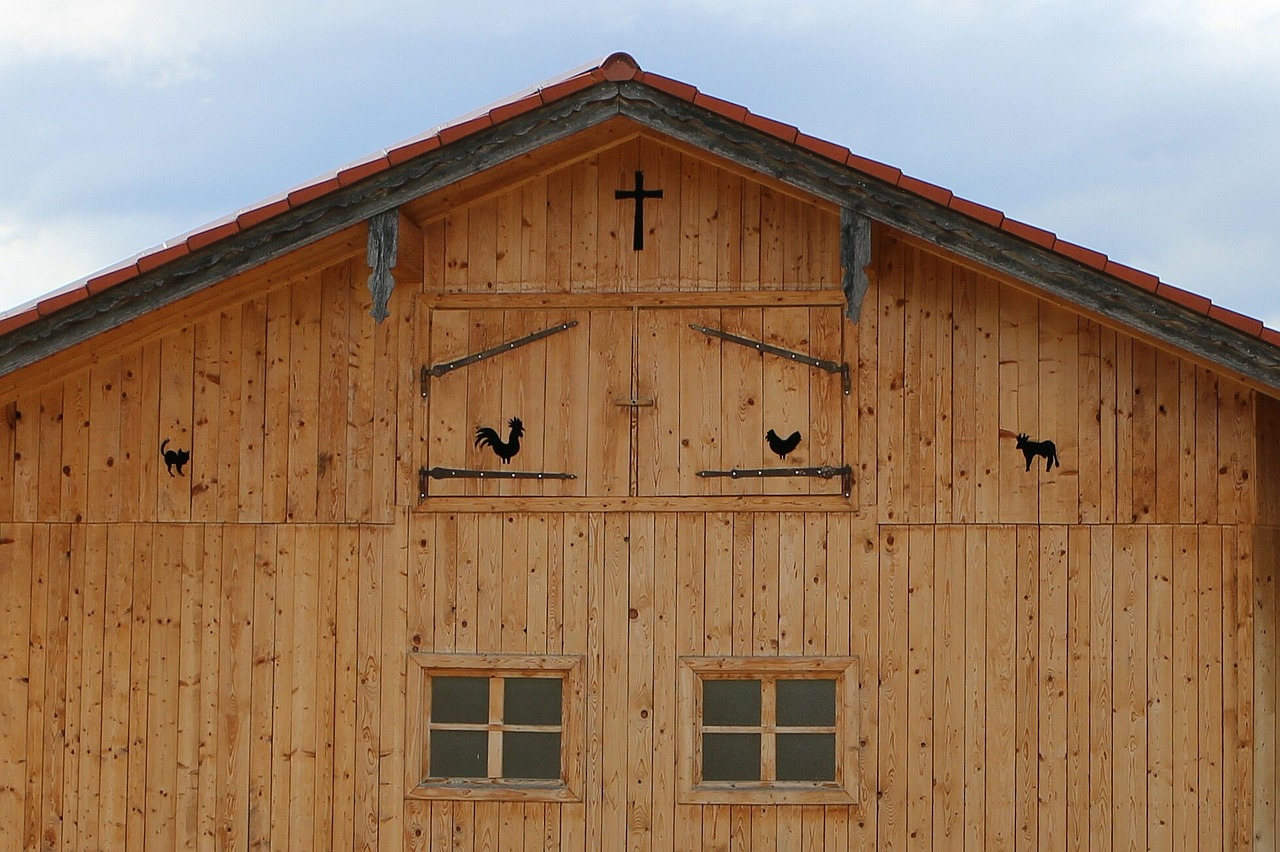
Natural Ventilation
Natural ventilation is a fantastic way to keep your home feeling fresh and airy without relying heavily on mechanical systems. This method harnesses the natural forces of winds and temperature differences to circulate air throughout your living spaces. Imagine opening your windows on a breezy day and feeling the cool air flowing in, pushing out stale air and pollutants. That’s the beauty of natural ventilation! It’s like your home taking a deep breath, rejuvenating itself with every gust of wind.
The beauty of natural ventilation lies in its simplicity and energy efficiency. By strategically opening windows and utilizing vents, you can create a cross-breeze that promotes a healthy indoor environment. This is particularly effective in climates where the temperature difference between indoors and outdoors is significant. For instance, during the cooler evenings, opening windows can allow cooler air to replace the warm air accumulated during the day, creating a comfortable atmosphere without cranking up the air conditioning.
However, natural ventilation does come with its own set of challenges. It’s not a one-size-fits-all solution. In areas where the weather is unpredictable or during extreme temperatures, relying solely on natural airflow can be less effective. For example, during a heatwave, opening windows might just let in hot air instead of providing relief. Similarly, in winter, you might find yourself battling the cold instead of enjoying fresh air. Therefore, it’s essential to assess your home’s layout and local climate when considering natural ventilation as a viable option.
To get the most out of natural ventilation, consider the following tips:
- Window Placement: Position your windows to encourage cross-ventilation. If you have windows on opposite sides of a room, opening both can create a powerful airflow.
- Use of Vents: Incorporate vents in strategic locations to facilitate air movement, especially in rooms that tend to trap heat.
- Seasonal Adjustments: Adapt your ventilation strategy according to the seasons. In summer, focus on nighttime cooling, while in winter, ensure to minimize drafts.
In summary, natural ventilation can be a game-changer for maintaining a comfortable and healthy home environment. It promotes better indoor air quality, reduces energy costs, and connects you with the outdoors. So, the next time you feel that gentle breeze, remember that it’s not just a refreshing moment; it's your home’s way of staying lively and vibrant. With a little planning and awareness, you can make the most of this eco-friendly ventilation method and enjoy the benefits it brings to your living space.

Benefits of Natural Ventilation
Natural ventilation is more than just a buzzword; it’s a practical solution that can transform your living space into a healthier and more enjoyable environment. One of the most significant benefits of natural ventilation is its ability to reduce energy costs. By allowing fresh air to flow freely through your home, you can minimize the need for air conditioning and heating systems, which can be a major expense in your monthly utility bills. Imagine opening your windows on a breezy day and feeling that refreshing air wash over you—it's not just pleasant, it's cost-effective!
Moreover, natural ventilation can significantly improve indoor air quality. When you let in fresh air, you are effectively flushing out indoor pollutants, allergens, and stale air that can accumulate over time. This is particularly beneficial for families with young children or individuals with respiratory issues. Just think of it as giving your home a breath of fresh air, quite literally!
Another remarkable aspect of natural ventilation is its environmental friendliness. By relying on the natural flow of air rather than mechanical systems, you are reducing your carbon footprint. This is a win-win situation: you save money while also contributing to a healthier planet. It’s like planting a tree for every window you open—every little bit helps!
In addition, natural ventilation promotes a comfortable living environment. The gentle breeze that flows through your home can help regulate temperatures, making it feel cooler in the summer and warmer in the winter. This natural regulation can lead to a more pleasant atmosphere, reducing the reliance on artificial heating and cooling systems. Think of it as nature’s way of providing you with a cozy hug!
However, it’s essential to consider that the effectiveness of natural ventilation can vary based on your home's design and location. Homes situated in areas with consistent breezes or those with strategically placed windows will benefit the most from this system. In fact, some studies show that homes designed with ventilation in mind can achieve up to a 30% reduction in energy consumption. Isn’t that impressive?
To sum it up, the benefits of natural ventilation are numerous and impactful. From cost savings and improved air quality to environmental benefits and increased comfort, it’s a simple yet effective way to enhance your home. So, why not take advantage of what nature has to offer? Open those windows and let the fresh air in!
- What is natural ventilation? Natural ventilation is the process of using natural forces, such as wind and temperature differences, to circulate air in and out of your home.
- How does natural ventilation save energy? By allowing fresh air to flow freely, it reduces the need for mechanical heating and cooling systems, leading to lower energy bills.
- Can natural ventilation work in all climates? While it is most effective in moderate climates, it can still be beneficial in various conditions with proper design and airflow pathways.
- What are some ways to enhance natural ventilation in my home? You can enhance natural ventilation by strategically placing windows, using vents, and ensuring there are unobstructed pathways for air to flow.
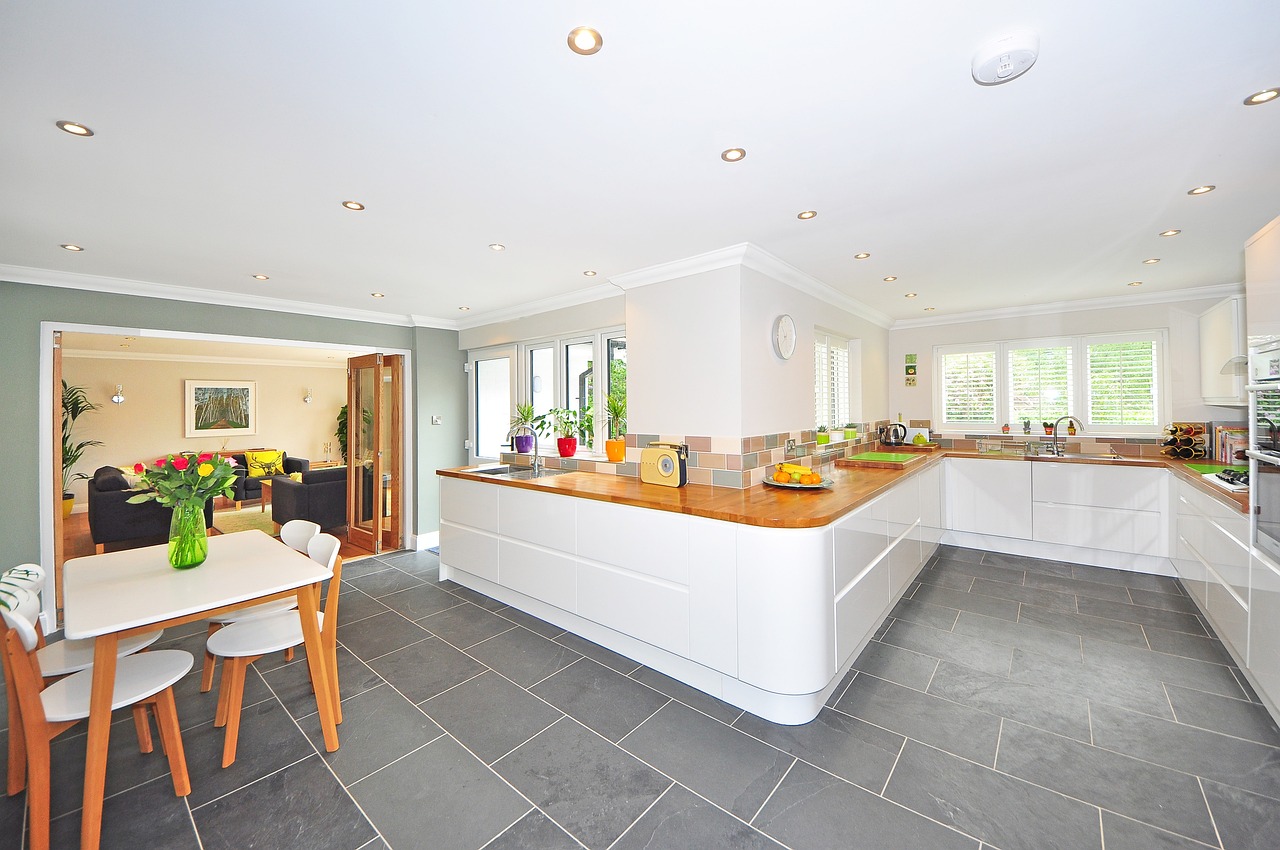
Limitations of Natural Ventilation
While natural ventilation offers a range of benefits, it is not without its limitations. One of the primary challenges is its dependence on weather conditions. In regions where the climate is characterized by extreme temperatures—either hot or cold—relying solely on natural airflow can become impractical. For example, during the sweltering summer months, opening windows might invite in heat rather than the refreshing breeze you desire. Conversely, in the dead of winter, letting in the cold air can lead to an uncomfortable indoor environment, making it necessary to close off ventilation altogether.
Moreover, the effectiveness of natural ventilation largely hinges on the design and layout of your home. Homes that lack adequate airflow pathways—such as windows, vents, and strategically placed openings—may struggle to achieve proper air exchange. This can result in stagnant air pockets, where pollutants and moisture accumulate, defeating the purpose of having ventilation in the first place. In such cases, the absence of a mechanical system to assist in airflow can lead to a host of indoor air quality issues.
Another limitation is that natural ventilation can be unpredictable. Unlike mechanical systems that can be controlled and adjusted to maintain consistent airflow, natural ventilation is subject to the whims of the weather. On calm days, when there is little to no wind, your home may feel stuffy and uncomfortable, leading to an increased reliance on air conditioning or heating systems, which can negate the energy-saving advantages of natural ventilation.
Lastly, in urban environments, outdoor air quality can be a concern. If you live in a bustling city with high levels of pollution, opening your windows may allow harmful contaminants to enter your home. This can exacerbate health issues, particularly for individuals with respiratory conditions. It's essential to weigh these factors carefully when considering natural ventilation as a solution for your home.
In summary, while natural ventilation can enhance indoor air quality and reduce energy costs, its limitations—such as dependence on weather, home design, unpredictability, and outdoor air quality—must be taken into account. Understanding these drawbacks can help homeowners make informed decisions about the best ventilation strategies for their living spaces.
- What is natural ventilation? Natural ventilation is the process of allowing outdoor air to circulate into a building, primarily through windows and vents, without the use of mechanical systems.
- What are the benefits of natural ventilation? Benefits include improved indoor air quality, reduced energy costs, and a lower environmental impact.
- Can natural ventilation be used in all climates? No, its effectiveness varies by climate; extreme temperatures can hinder its efficiency.
- How can I enhance natural ventilation in my home? You can enhance it by ensuring adequate window placement, using vents, and keeping pathways clear for airflow.

Mechanical Ventilation
Mechanical ventilation is a game changer when it comes to ensuring fresh air flows through your home, regardless of the weather outside. Think of it as the heart of your indoor air system, pumping in fresh air while expelling stale air. This method uses fans and ductwork to create a controlled environment that can significantly enhance your living space. Unlike natural ventilation, which depends on the whims of the weather, mechanical ventilation provides a consistent and reliable airflow, making it an excellent choice for homes in areas where outdoor conditions may not always be favorable.
One of the major advantages of mechanical ventilation is its ability to filter the air being brought into your home. Many systems come equipped with filters that can capture dust, pollen, and other allergens, which is especially beneficial for those with allergies or respiratory issues. By doing so, mechanical systems not only enhance air quality but also contribute to a healthier living environment. Imagine breathing in air that’s been scrubbed clean, free from the pollutants that can make you feel sluggish or unwell. It’s like having a personal air purifier for your entire home!
Moreover, mechanical ventilation systems can be designed to work in tandem with your heating and cooling systems, optimizing energy use while maintaining comfort. For instance, heat recovery ventilators (HRVs) and energy recovery ventilators (ERVs) can transfer heat between incoming and outgoing air streams, ensuring that your home stays warm in the winter and cool in the summer without straining your energy bills. This means you can enjoy a comfortable atmosphere while also being kind to your wallet.
However, it's important to note that mechanical ventilation systems require proper installation and maintenance to function effectively. Regularly checking filters and ensuring that ducts are clean can prevent issues that might hinder airflow. Neglecting these aspects could lead to reduced efficiency and increased energy costs, which defeats the purpose of having such a system in the first place. So, think of it as a relationship; the better care you take of it, the more it gives back.
In summary, mechanical ventilation is an essential component of modern home design. It provides a steady supply of fresh air, improves indoor air quality, and enhances overall comfort. Whether you're building a new home or upgrading your existing one, considering a mechanical ventilation system can lead to a healthier, more enjoyable living environment.
- What is the main difference between natural and mechanical ventilation?
Natural ventilation relies on external weather conditions, while mechanical ventilation uses fans and ducts to control airflow regardless of outside conditions. - How often should I change the filters in my mechanical ventilation system?
It's recommended to check and potentially change filters every 1-3 months, depending on the level of use and air quality. - Can mechanical ventilation systems help with humidity control?
Yes! Many mechanical systems can help manage humidity levels, reducing the risk of mold growth and improving overall comfort.

Importance of Indoor Air Quality
Maintaining good indoor air quality is essential for health, as poor ventilation can lead to respiratory issues and other health problems caused by pollutants and allergens. Have you ever walked into a room and immediately felt a sense of discomfort? That’s often a sign that the air quality isn’t up to par. When we think about our homes, we typically focus on aesthetics and comfort, but the air we breathe is just as crucial. It’s like the invisible foundation of our living environment.
Indoor air quality (IAQ) is influenced by a variety of factors, including the presence of dust, mold, volatile organic compounds (VOCs), and other pollutants. These can originate from household products, building materials, and even our own activities, such as cooking or cleaning. The accumulation of these pollutants can lead to a range of health issues, making it imperative to ensure that our indoor spaces are well-ventilated and free from harmful substances.
According to the Environmental Protection Agency (EPA), indoor air can be up to five times more polluted than outdoor air. This statistic is alarming because it highlights the importance of actively managing our indoor environments. Poor ventilation can trap these pollutants, leading to a variety of health concerns, including:
- Respiratory Issues: Prolonged exposure to poor air quality can exacerbate asthma and lead to other respiratory conditions.
- Allergies: Dust mites, pet dander, and mold can trigger allergic reactions, making it difficult to breathe comfortably.
- Fatigue and Headaches: Low oxygen levels and high concentrations of carbon dioxide can lead to feelings of fatigue and persistent headaches.
Improving indoor air quality is not just about comfort; it’s about creating a healthier living space. Implementing effective ventilation strategies can significantly enhance IAQ. For instance, using exhaust fans in kitchens and bathrooms can help remove excess moisture and pollutants. Additionally, regular maintenance of HVAC systems ensures that air filters are clean and functioning optimally, allowing for better air circulation.
In summary, the importance of indoor air quality cannot be overstated. It is a fundamental aspect of our health and well-being. By taking proactive steps to improve ventilation and reduce indoor pollutants, we can create a living environment that not only feels good but is also conducive to our overall health. So, the next time you feel that discomfort in a room, remember that the air quality might just need a little attention!
- What are the signs of poor indoor air quality? Symptoms can include headaches, fatigue, sneezing, and persistent coughs.
- How can I improve indoor air quality? Regular cleaning, using air purifiers, and ensuring proper ventilation can help.
- Is it necessary to have a professional check my air quality? While DIY methods can help, a professional assessment can provide a comprehensive understanding of your indoor air quality.
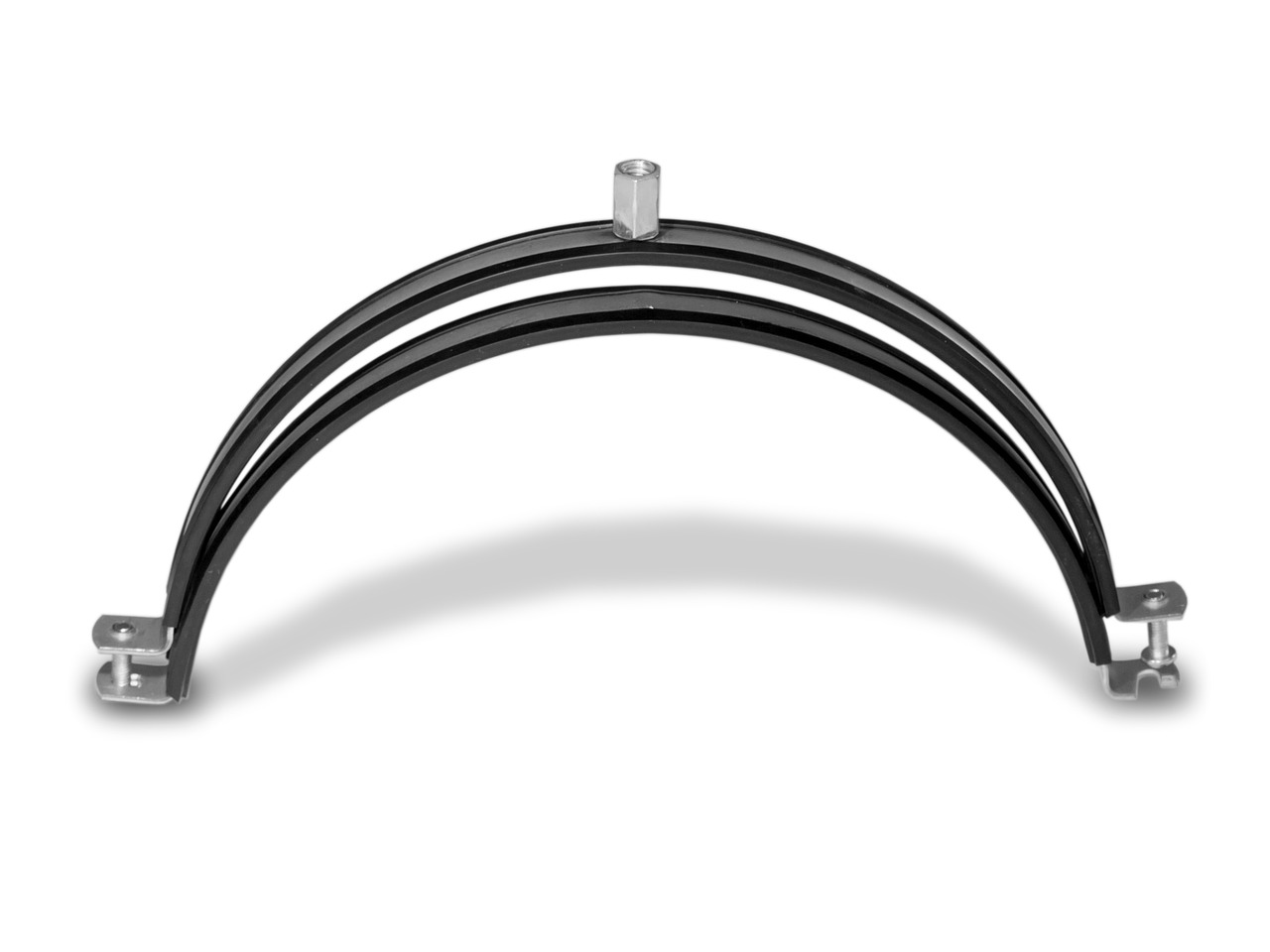
Health Effects of Poor Ventilation
Poor ventilation in your home can lead to a multitude of health issues that may not be immediately apparent but can significantly affect your quality of life. Imagine living in a space that feels stuffy and stale; it’s not just uncomfortable, but it can also be detrimental to your health. When air circulation is inadequate, pollutants such as dust, pet dander, and volatile organic compounds (VOCs) can accumulate, creating an unhealthy indoor environment. This buildup can lead to a range of symptoms and health problems, particularly for vulnerable populations such as children, the elderly, and those with pre-existing health conditions.
One of the most common issues related to poor ventilation is the development of respiratory problems. Inhalation of contaminated air can exacerbate conditions like asthma and allergies, leading to increased frequency and severity of attacks. Individuals may experience symptoms such as:
- Coughing - A persistent cough can signal irritation caused by poor air quality.
- Shortness of breath - Difficulty in breathing can arise from inhaling allergens and irritants.
- Chest tightness - A feeling of pressure in the chest can be a direct response to air pollution indoors.
Moreover, the impact of poor ventilation extends beyond respiratory issues. It can also cause neurological symptoms, such as headaches and fatigue. The presence of mold, which thrives in damp, poorly ventilated areas, can release mycotoxins that are harmful to human health. These toxins can lead to symptoms like:
- Chronic fatigue - Feeling unusually tired can often be linked to poor indoor air quality.
- Cognitive difficulties - Poor air quality can impair concentration and memory.
In addition to these physical symptoms, the psychological effects of living in a poorly ventilated space should not be overlooked. A stuffy environment can lead to feelings of irritability and stress, creating a cycle that negatively affects both mental and physical health. If you’ve ever felt lethargic or unmotivated in a cramped, poorly aired room, you know exactly what we mean!
To summarize, the health effects of poor ventilation are far-reaching and can manifest in various forms. Addressing ventilation issues in your home is not just about comfort; it’s a crucial step towards safeguarding your health and well-being. By ensuring proper airflow, you can mitigate these risks, creating a healthier living environment for you and your family.
Here are some common questions regarding the health effects of poor ventilation:
- What are the signs of poor ventilation? Signs include stale air, condensation on windows, and musty odors.
- How can I improve ventilation in my home? Consider using exhaust fans, opening windows, or installing a mechanical ventilation system.
- Is poor ventilation linked to mold growth? Yes, inadequate airflow can create damp conditions that promote mold development.

Improving Indoor Air Quality
Improving indoor air quality (IAQ) is not just a luxury; it's a necessity for anyone who wants to create a healthy living environment. Think about it: you spend a significant portion of your day indoors, whether you're at home, working, or relaxing. The air you breathe should be as clean and fresh as possible. So, how do you achieve that? It all begins with understanding the sources of indoor pollutants and taking proactive steps to mitigate them.
One of the first steps in enhancing your indoor air quality is to ensure that your home is well-ventilated. This means not only allowing fresh air to circulate but also ensuring that harmful substances are effectively removed. You might be surprised to learn that common household items such as cleaning products, paints, and even furniture can release volatile organic compounds (VOCs) into the air. These compounds can lead to headaches, dizziness, and long-term health issues. Therefore, it's crucial to choose low-VOC products whenever possible and to ventilate your space adequately when using products that emit these chemicals.
Another effective strategy is to incorporate air-purifying plants into your home. Plants such as spider plants, peace lilies, and snake plants are known for their ability to absorb toxins and improve air quality. Not only do they enhance the aesthetic appeal of your home, but they also act as natural air filters, providing a dual benefit. Just imagine walking into a room filled with greenery, knowing that it's not only beautiful but also contributing to your health!
Additionally, regular maintenance of your HVAC system is vital. A well-maintained heating, ventilation, and air conditioning (HVAC) system can significantly improve air quality by filtering out dust, allergens, and other pollutants. Be sure to change your air filters regularly—every three months is a good rule of thumb. If you have pets, you might want to change them more frequently to keep up with the extra hair and dander.
Moreover, consider using a dehumidifier in areas prone to excess moisture, such as basements and bathrooms. High humidity levels can lead to mold growth, which is not only unsightly but can also pose serious health risks. By controlling humidity, you can prevent mold from becoming a problem in the first place. This is especially important in regions with high humidity or during the rainy season.
Lastly, it’s essential to keep your home clean. Regular dusting, vacuuming with a HEPA filter, and washing bedding in hot water can help reduce allergens and dust mites. You might think of your home as a sanctuary, but without proper cleaning and maintenance, it can quickly become a breeding ground for pollutants. So, roll up your sleeves and make cleaning a part of your routine!
In summary, improving indoor air quality involves a combination of effective ventilation, choosing the right products, incorporating nature, maintaining your HVAC system, controlling humidity, and keeping your space clean. By implementing these strategies, you can create a healthier, more comfortable living environment for you and your family.
- What are the signs of poor indoor air quality?
Common signs include persistent odors, increased allergy symptoms, and visible mold growth. - How often should I change my HVAC filters?
It's recommended to change them every three months, or more often if you have pets. - Can air purifiers help improve indoor air quality?
Yes, air purifiers can effectively remove pollutants from the air, especially those with HEPA filters. - Are there specific plants that help improve air quality?
Yes, plants like spider plants, peace lilies, and snake plants are known for their air-purifying properties.
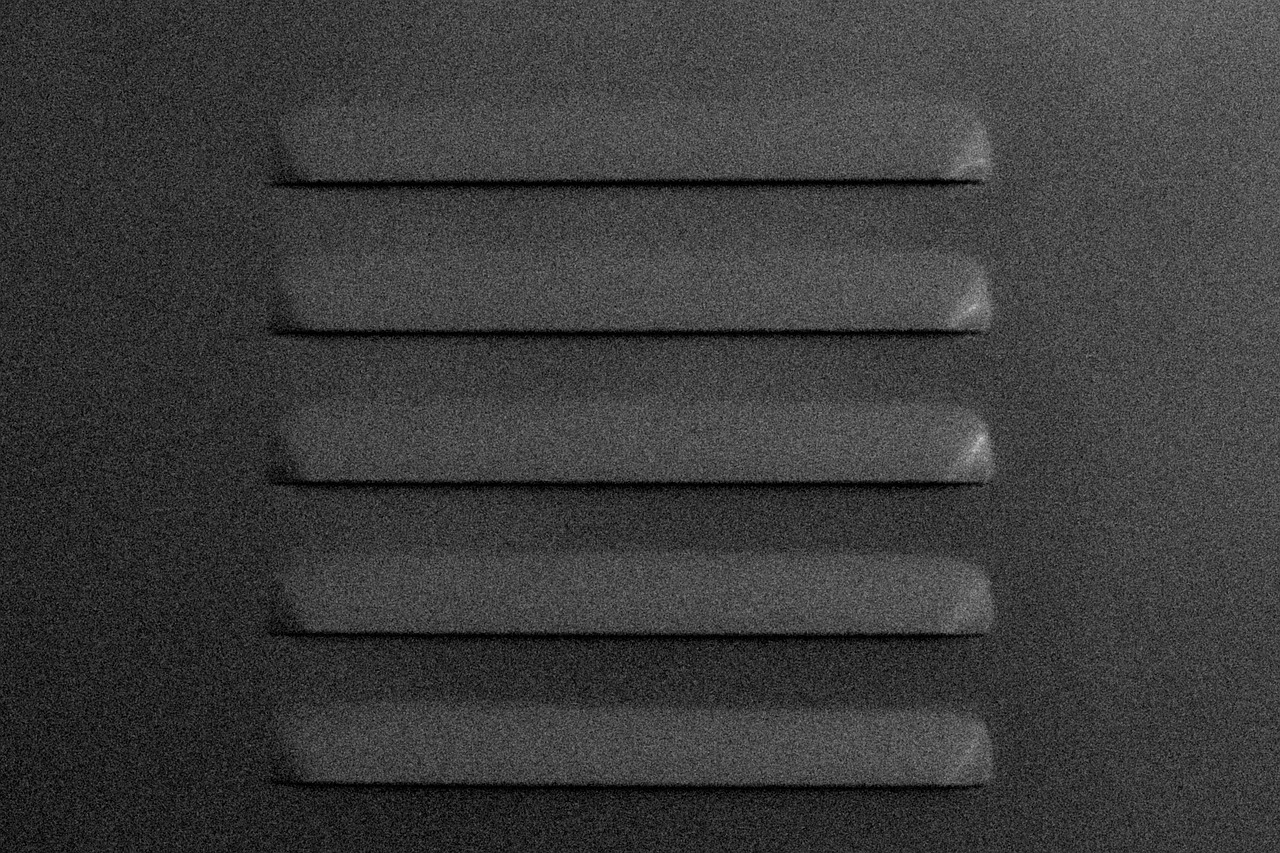
Moisture Control
Proper ventilation is your home's best friend when it comes to moisture control. Think of it as the superhero fighting against the villain of excess humidity. When moisture levels rise, they can wreak havoc on your living space, leading to mold growth, structural damage, and even health issues. But how does ventilation swoop in to save the day? It works by allowing fresh air to circulate, pushing out the humid, stale air that can accumulate indoors.
Imagine your home as a sponge. If that sponge is left in water, it becomes saturated and starts to break down. Similarly, when your home retains too much moisture, it can lead to a host of problems. Proper ventilation acts like a gentle breeze, drying out that sponge and keeping your living environment healthy and comfortable. It helps maintain optimal humidity levels, ideally between 30% and 50%, which is crucial for preventing the growth of mold and mildew.
One of the most significant benefits of controlling moisture through ventilation is mold prevention. Mold thrives in damp, stagnant environments. By ensuring that your home has adequate airflow, you can significantly reduce the chances of mold spores settling and multiplying. This is especially important in areas prone to high humidity, such as bathrooms and basements. Installing exhaust fans in these areas can be a game-changer, allowing moisture to escape quickly.
Another critical aspect of moisture control is maintaining structural integrity. Excess moisture can lead to serious damage over time, affecting walls, ceilings, and even the foundation of your home. For instance, wood can warp, paint can peel, and structural elements can weaken when they are consistently exposed to high humidity levels. By implementing effective ventilation strategies, you can protect your home from these costly repairs.
To sum it up, moisture control is not just about comfort; it's about protecting your home and your health. Here are a few practical tips to enhance moisture control through ventilation:
- Use exhaust fans in high-moisture areas like kitchens and bathrooms.
- Open windows when the weather permits to allow fresh air to circulate.
- Consider installing a whole-house ventilation system if necessary.
- Regularly check for leaks and address any plumbing issues promptly.
In conclusion, proper ventilation is essential for moisture control, safeguarding your home from mold and structural damage. By understanding and implementing effective ventilation strategies, you can create a healthier living environment for you and your family.
Q: What is the ideal humidity level for my home?
A: The ideal humidity level is typically between 30% and 50%. Maintaining this range helps prevent mold growth and keeps your home comfortable.
Q: How can I tell if my home has moisture problems?
A: Signs of moisture problems include visible mold, a musty smell, condensation on windows, and peeling paint. If you notice these signs, it may be time to improve your ventilation.
Q: Can I rely solely on natural ventilation for moisture control?
A: While natural ventilation can be effective, it may not be sufficient in all climates or conditions. Mechanical ventilation systems can provide consistent airflow, especially in areas with high humidity.
Q: What should I do if I find mold in my home?
A: If you find mold, it’s essential to address it immediately. Small patches can often be cleaned with a mixture of water and detergent, but larger infestations may require professional help.
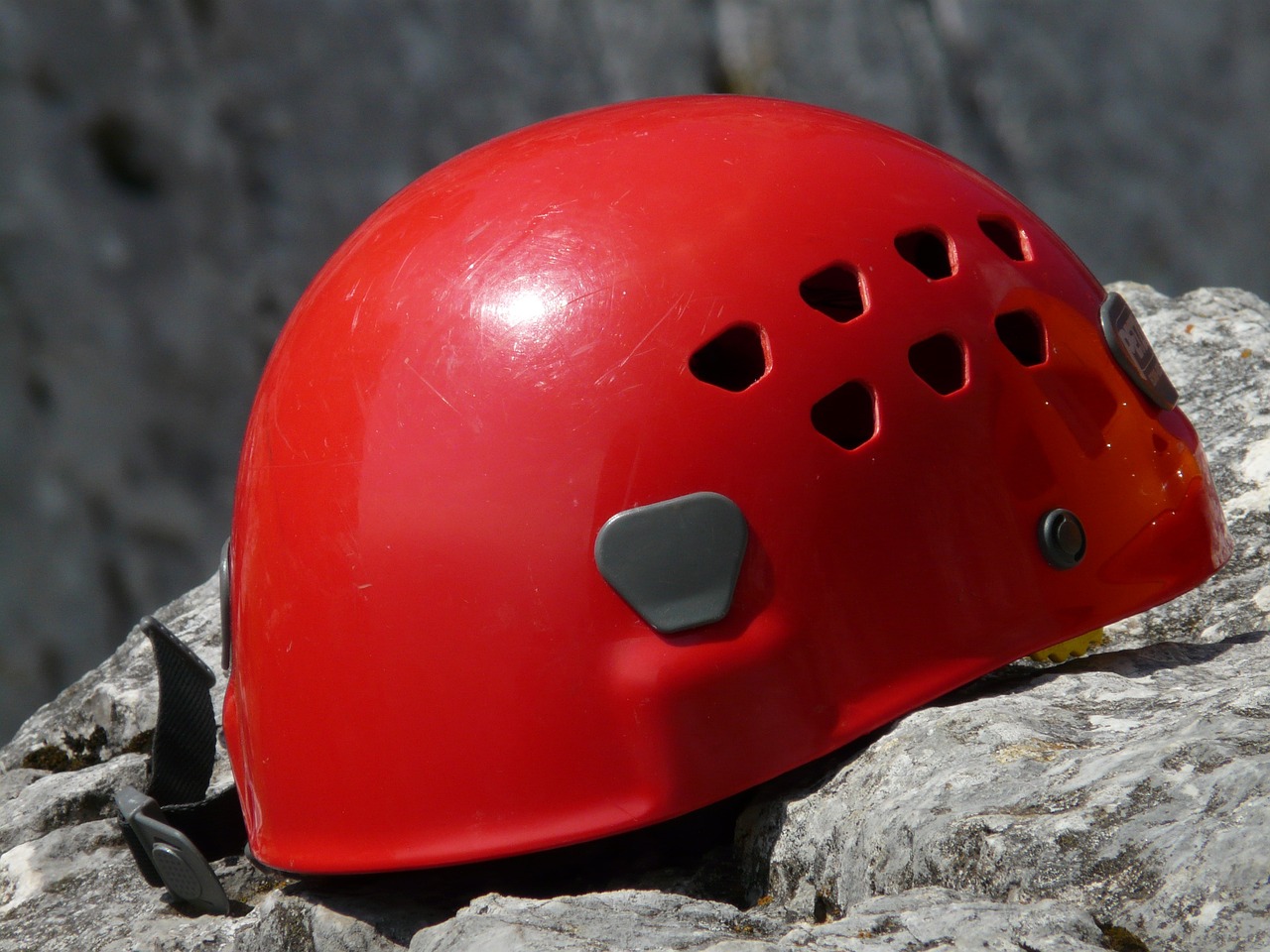
Mold Prevention
Mold is more than just an unsightly nuisance; it can pose serious health risks and damage your home. Therefore, effective ventilation is crucial in preventing mold growth. When moisture levels rise in your home, it creates a perfect breeding ground for mold spores. By ensuring proper airflow, you can significantly reduce humidity levels, making it harder for mold to thrive. Think of ventilation as the lungs of your home; just as we need fresh air to breathe, our living spaces require a consistent exchange of air to stay healthy.
One of the most effective strategies for mold prevention is to maintain optimal humidity levels. Ideally, indoor humidity should be kept between 30% and 50%. You can easily monitor these levels using a hygrometer, a handy tool that measures humidity. If you find that your home often exceeds this range, it’s a sign that your ventilation system may need some attention. Here are a few tips to keep in mind:
- Open windows when weather permits to allow fresh air to circulate.
- Use exhaust fans in areas prone to moisture, such as bathrooms and kitchens.
- Consider installing a dehumidifier in particularly humid areas of your home.
In addition to these practices, regular maintenance of your ventilation system is essential. This includes cleaning filters and ducts to ensure that air can flow freely. A clogged or dirty system can not only hinder airflow but also circulate dust and allergens, further compromising your indoor air quality. Furthermore, consider the placement of your ventilation sources. For instance, strategically positioning vents and exhaust fans can help direct moisture out of your home more effectively.
Another often-overlooked aspect of mold prevention is insulation. Proper insulation helps maintain consistent temperatures throughout your home, reducing the risk of condensation. Areas like attics and basements are particularly vulnerable to temperature fluctuations, so ensuring these spaces are well-insulated can make a significant difference. Remember, a well-ventilated home is a healthy home, so taking proactive steps to prevent mold is not just about aesthetics; it’s about safeguarding the health of your family and the integrity of your property.
Q: How can I tell if I have a mold problem in my home?
A: Common signs include a musty odor, visible mold growth on surfaces, and health symptoms like sneezing or coughing when indoors.
Q: Can I remove mold myself?
A: Small areas of mold can often be cleaned with soap and water or a vinegar solution. However, for larger infestations, it’s best to consult a professional.
Q: Does air conditioning help prevent mold?
A: Yes, air conditioning can help reduce humidity levels, but it should be used in conjunction with proper ventilation for best results.
Q: How often should I check my ventilation system?
A: It’s advisable to check your ventilation system at least once a year, or more frequently if you notice issues with air quality or humidity.
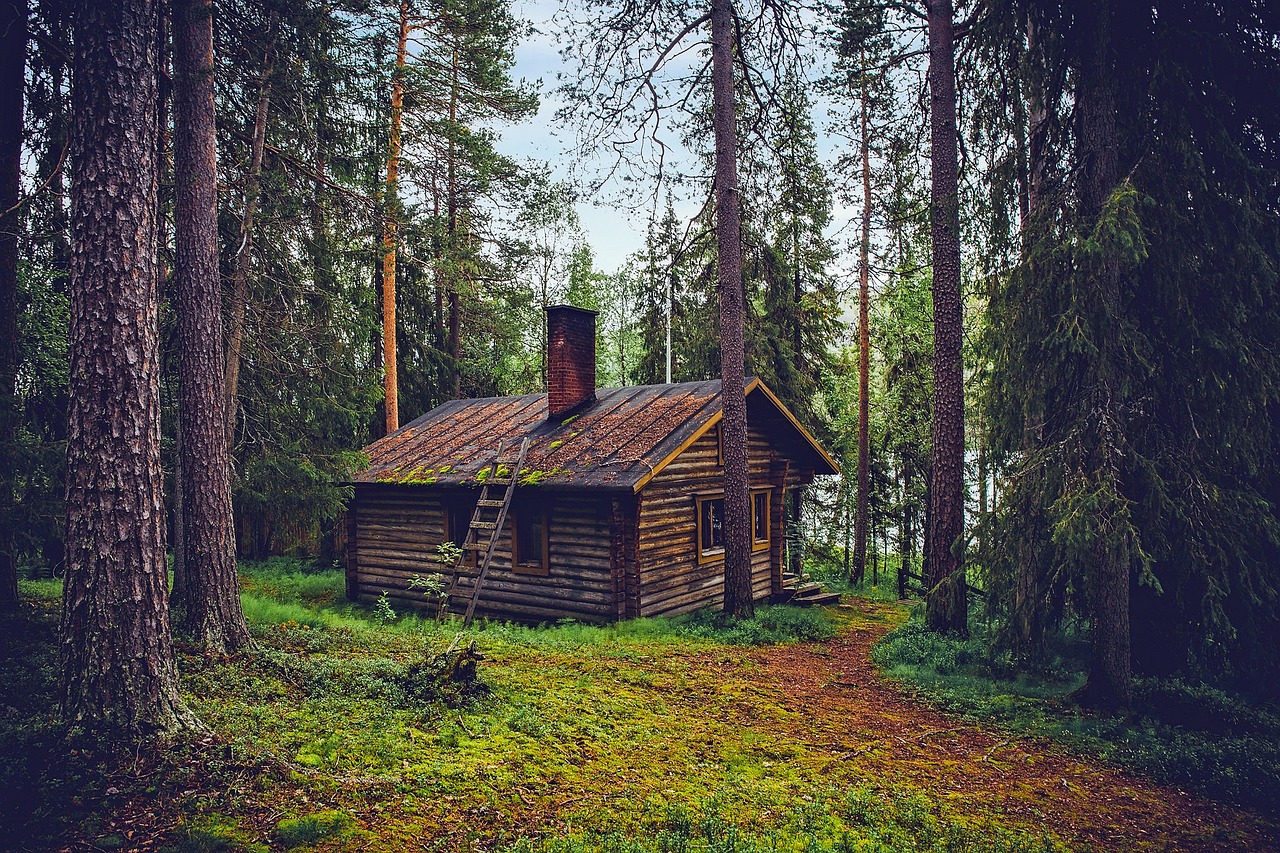
Structural Integrity
Maintaining optimal humidity through proper ventilation is not just a matter of comfort; it's crucial for the of your home. Think of your house as a living organism, where every part needs to function harmoniously to sustain its health. When humidity levels rise too high due to inadequate ventilation, it can lead to a plethora of problems that threaten the very foundation of your abode. For instance, excess moisture can seep into walls, ceilings, and even the foundation, causing materials to weaken over time. This is akin to letting water slowly erode the banks of a river; eventually, the structure will give way.
Here are some of the key issues that can arise from poor ventilation:
- Mold Growth: Mold thrives in damp environments, and without proper airflow, it can become a persistent issue, leading to health risks and further structural damage.
- Wood Rot: Wooden structures, such as beams and flooring, are particularly vulnerable to moisture. Prolonged exposure can cause wood to rot, compromising the stability of your home.
- Foundation Damage: Excess moisture can lead to soil expansion and contraction, which can cause cracks and shifts in your foundation over time.
To visualize the impact of humidity on your home, consider the following table that outlines potential moisture-related issues and their consequences:
| Moisture Issue | Potential Consequences |
|---|---|
| Mold Growth | Health issues, damage to walls and ceilings |
| Wood Rot | Structural instability, costly repairs |
| Foundation Damage | Cracks, shifting, expensive foundation work |
In summary, ensuring that your home is properly ventilated is not merely a suggestion; it's a necessity for preserving its . By maintaining a balanced humidity level, you can protect your investment and create a safe, healthy living environment. Think of ventilation as the lungs of your home, breathing in fresh air and expelling the stale, ensuring that every corner remains dry and strong.
Q: How can I tell if my home has proper ventilation?
A: Signs of poor ventilation include musty odors, condensation on windows, and visible mold growth. If you notice these issues, it may be time to assess your ventilation system.
Q: What are some simple ways to improve ventilation in my home?
A: You can improve ventilation by opening windows regularly, using exhaust fans in kitchens and bathrooms, and investing in an energy recovery ventilator (ERV) system.
Q: Can I have too much ventilation?
A: Yes, excessive ventilation can lead to energy loss and increased heating or cooling costs. It's essential to strike a balance between fresh air intake and energy efficiency.

Energy Efficiency Considerations
When it comes to creating a comfortable home, energy efficiency is a crucial factor that often gets overlooked. Balancing ventilation with energy efficiency not only helps in maintaining a healthy indoor environment but also plays a significant role in reducing your utility bills. Imagine your home as a living organism; just like we need to breathe in fresh air, our homes need proper ventilation to function optimally. However, if not managed well, this can lead to energy wastage, which is something no homeowner wants.
Understanding how ventilation interacts with your heating and cooling systems is key to optimizing energy use. For instance, if you have a mechanical ventilation system, it’s essential to consider how it works with your HVAC system. If the two are not in sync, you could be wasting energy by heating or cooling air that is then lost through inadequate sealing or poor ventilation strategies. This is where the concept of air exchange rate comes into play. The air exchange rate is the measure of how often the air in your home is replaced with outdoor air, and finding the right balance can lead to significant energy savings.
To illustrate this point, let’s take a look at a simple table that outlines various ventilation methods and their energy efficiency ratings:
| Ventilation Method | Energy Efficiency Rating | Best For |
|---|---|---|
| Natural Ventilation | High | Moderate climates with adequate airflow |
| Mechanical Ventilation | Medium | All climates, especially in extreme conditions |
| Hybrid Ventilation | High | Versatile for various conditions |
As you can see, natural ventilation scores high on energy efficiency, but it may not be suitable for every climate. This is where mechanical and hybrid systems shine, providing the flexibility needed to maintain good air quality without compromising on energy consumption.
Another essential aspect to consider is the installation of energy-efficient appliances. For example, using energy recovery ventilators (ERVs) or heat recovery ventilators (HRVs) can significantly enhance your home's ventilation system. These devices work by transferring heat and moisture between incoming and outgoing air streams, which helps maintain indoor temperatures while ensuring fresh air circulation. By investing in such technologies, you not only improve your home's air quality but also achieve long-term savings on energy bills.
In conclusion, integrating effective ventilation strategies with energy efficiency considerations is like hitting two birds with one stone. You create a healthier living environment while also keeping your utility costs in check. Remember, a well-ventilated home is not just about comfort; it’s also about smart energy use. So, the next time you think about your home's ventilation, consider how it impacts your energy consumption and take the steps necessary to optimize both.
- What is the best ventilation system for energy efficiency?
Natural ventilation is often the most energy-efficient option, but mechanical and hybrid systems can offer benefits in extreme climates. - How can I improve my home's ventilation?
Consider installing ERVs or HRVs, sealing any leaks, and ensuring that your HVAC system is properly maintained. - Does good ventilation really affect my energy bills?
Absolutely! Proper ventilation can help maintain indoor temperatures, reducing the need for excessive heating or cooling.

Ventilation and Heating/Cooling
When it comes to creating a comfortable living space, understanding the relationship between ventilation and your heating and cooling systems is essential. Think of your home as a living organism; just as our bodies need a balance of oxygen and temperature to thrive, your home requires proper air exchange and temperature regulation to maintain a healthy environment. Proper ventilation not only helps in regulating indoor temperatures but also enhances the efficiency of your HVAC systems, leading to significant energy savings.
Incorporating effective ventilation strategies can drastically improve the performance of your heating and cooling systems. For instance, when fresh air circulates through your home, it helps to dilute indoor pollutants and allergens, making it easier for your HVAC system to maintain the desired temperature. This means your heating and cooling units don’t have to work as hard, which can lead to lower energy bills. The synergy between ventilation and HVAC systems is crucial for achieving optimal indoor air quality and comfort.
Moreover, consider the seasonal changes in your area. In the summer, natural ventilation can help cool your home by allowing cooler outdoor air to enter, reducing the load on your air conditioning system. Conversely, during winter, a well-ventilated home can help prevent the buildup of moisture, which can lead to mold and mildew, while also allowing your heating system to operate more efficiently. The key is to find the right balance that suits your climate and lifestyle.
To illustrate the benefits of integrating ventilation with heating and cooling systems, let’s look at some effective strategies:
- Use of Exhaust Fans: Install exhaust fans in areas prone to moisture, like kitchens and bathrooms, to expel stale air and allow fresh air to circulate.
- Programmable Thermostats: These devices can optimize your HVAC system's performance by adjusting the temperature based on occupancy and outdoor conditions, ensuring that ventilation works in harmony with heating and cooling.
- Regular Maintenance: Ensure your heating and cooling systems are well-maintained to operate efficiently. Clean filters and ducts can significantly improve airflow and indoor air quality.
In conclusion, understanding the interplay between ventilation and heating/cooling systems is vital for maintaining a comfortable and healthy home. By implementing effective ventilation strategies, you can enhance the efficiency of your HVAC systems, leading to lower energy costs and improved indoor air quality. So, next time you think about your home’s climate, remember that good ventilation is just as important as the temperature on your thermostat!
Q: How often should I ventilate my home?
A: Ideally, you should ventilate your home daily, especially in areas like kitchens and bathrooms where moisture and pollutants are more prevalent.
Q: Can I rely solely on natural ventilation?
A: While natural ventilation is effective in many climates, it may not provide sufficient air exchange in extreme weather conditions. A combination of natural and mechanical ventilation is often the best approach.
Q: How does poor ventilation affect my heating and cooling costs?
A: Poor ventilation can lead to increased humidity and temperature imbalances, causing your HVAC system to work harder, which results in higher energy bills.
Q: What are some signs that my home is poorly ventilated?
A: Signs include persistent odors, excessive humidity, condensation on windows, and mold growth. If you notice these issues, it may be time to assess your ventilation systems.

Cost-Effective Solutions
When it comes to ensuring proper ventilation in your home, are not just a luxury; they are a necessity. With the rising costs of energy and the increasing awareness of health issues related to poor indoor air quality, finding ways to ventilate your home without breaking the bank is crucial. So, how can you achieve this balance?
First, consider implementing natural ventilation. This method utilizes the natural forces of wind and temperature differences to circulate air throughout your home. By simply opening windows and strategically placing vents, you can create a flow of fresh air that is both effective and free! This approach is especially beneficial in climates where the weather is mild, allowing you to enjoy the outdoors without relying on energy-consuming systems.
However, if natural ventilation isn’t sufficient for your needs, mechanical systems offer an alternative. While these systems may require an upfront investment, they can lead to significant savings in the long run. For instance, energy recovery ventilators (ERVs) and heat recovery ventilators (HRVs) can efficiently exchange stale indoor air with fresh outdoor air while minimizing energy loss. This means you can maintain a comfortable temperature without excessively relying on your heating and cooling systems.
Furthermore, you can enhance the efficiency of your existing systems by performing regular maintenance. A well-maintained HVAC system not only runs more efficiently but also lasts longer. Simple tasks like cleaning or replacing filters, sealing ductwork, and ensuring that vents are unobstructed can lead to substantial energy savings. Consider this: a small investment in maintenance can prevent larger costs associated with repairs or replacements down the line.
Additionally, consider integrating smart home technology to optimize your ventilation system. Smart thermostats and air quality monitors can help you track and adjust your home’s ventilation in real-time. These devices allow you to make informed decisions about when to ventilate, ensuring that you’re not wasting energy when it’s unnecessary. Imagine being able to control your home’s air quality from your smartphone while you’re out and about!
Lastly, don’t overlook the potential of passive solar design. By strategically placing windows and using thermal mass materials, you can enhance natural airflow and reduce the need for mechanical systems. This not only saves money but also contributes to a more sustainable living environment.
In summary, achieving proper ventilation doesn’t have to drain your wallet. By utilizing natural methods, maintaining existing systems, and leveraging technology, you can create a comfortable and healthy home. Remember, the goal is to balance efficiency and effectiveness while keeping costs in check. Now, let's address some common questions regarding cost-effective ventilation solutions!
- What is the most cost-effective way to ventilate my home?
Natural ventilation is often the most cost-effective method, as it relies on the natural flow of air. However, combining it with mechanical systems can enhance effectiveness. - How often should I maintain my HVAC system?
It's recommended to check and replace filters every 1-3 months and schedule professional maintenance at least once a year. - Can smart technology really save me money on ventilation?
Yes! Smart technology can optimize your ventilation system, ensuring you use energy only when necessary, leading to potential savings on your energy bills.
Frequently Asked Questions
- What is ventilation and why is it important?
Ventilation is the process of exchanging indoor air with outdoor air. It's crucial because it helps remove pollutants, control moisture, and maintain a comfortable atmosphere in your home. Think of it as your home's breathing system, ensuring that stale air is replaced with fresh air for a healthier living environment.
- What are the different types of ventilation systems?
There are three main types of ventilation systems: natural, mechanical, and hybrid. Natural ventilation relies on wind and temperature differences to circulate air, while mechanical ventilation uses fans and ducts to control airflow. Hybrid systems combine both methods to optimize air exchange based on the conditions.
- How does poor ventilation affect indoor air quality?
Poor ventilation can lead to a buildup of harmful substances like allergens and pollutants, which can cause respiratory issues, headaches, and fatigue. It's like trying to breathe in a stuffy room; without proper airflow, the air quality deteriorates, impacting your health and well-being.
- Can natural ventilation be effective in all climates?
Not necessarily! While natural ventilation is energy-efficient and beneficial in suitable climates, it may not work well in extreme weather conditions or in homes lacking adequate airflow pathways. It's essential to assess your specific environment to determine its effectiveness.
- How can I improve indoor air quality in my home?
Improving indoor air quality can be achieved by implementing effective ventilation strategies, such as opening windows, using exhaust fans, and considering mechanical ventilation systems. Regular maintenance and cleaning also play a significant role in keeping the air fresh and free from pollutants.
- What is the relationship between ventilation and moisture control?
Proper ventilation is key to controlling humidity levels in your home, which helps prevent mold growth and structural damage. By allowing moist air to escape and fresh air to enter, you create a balanced environment that protects both your health and your property.
- How can I ensure energy efficiency while ventilating my home?
Balancing ventilation with energy efficiency involves understanding how your heating and cooling systems interact with air exchange. Investing in energy-efficient ventilation solutions can lead to long-term savings on energy bills while maintaining a comfortable and healthy indoor climate.












